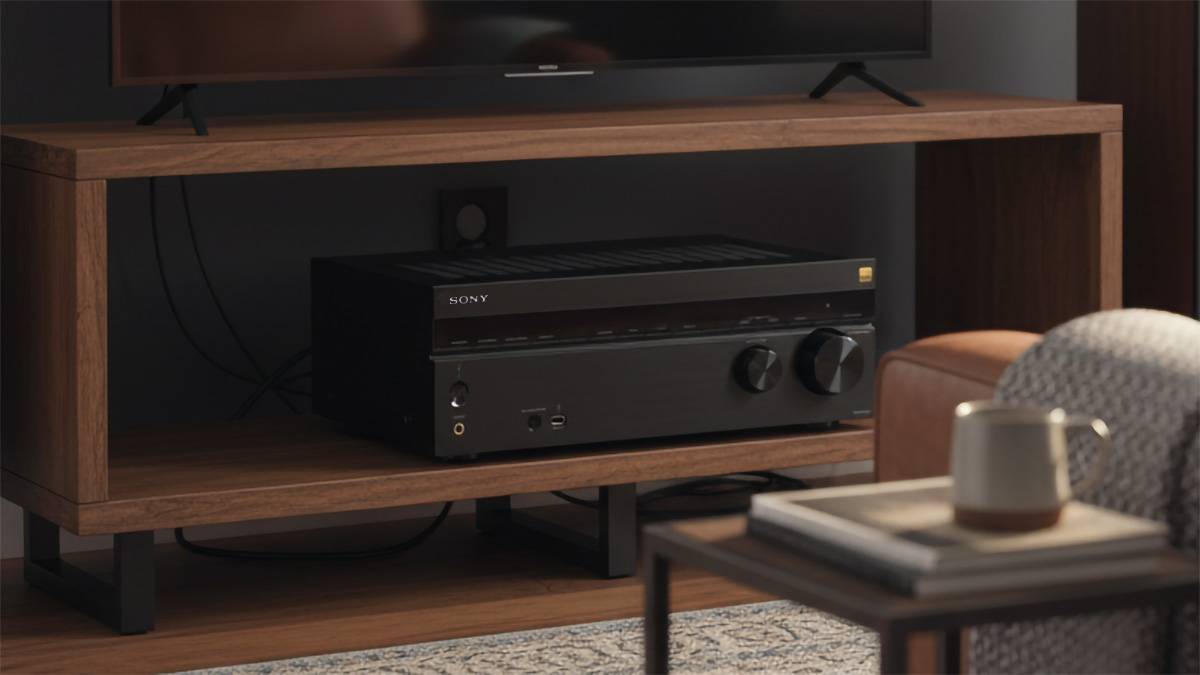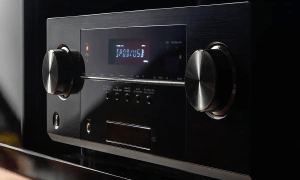You bought speakers you love, or you are about to, and now you are staring at amplifier and AVR specs that seem almost designed to confuse. Watts per channel, sensitivity numbers, eight ohm versus four ohm loads, peak power, continuous power, it is a lot. Let us cut through it with clear rules, simple math you can use, and a few model suggestions that make real world sense.
Start with the job, not the box. Your amplifier needs to play as loud as you prefer at your seat, with clean peaks, and without strain. That goal depends on three things. Speaker sensitivity, distance to the seat, and how loud you like to listen. Speaker sensitivity tells you how much sound a speaker makes for a given input. Most companies quote sensitivity at one meter using two point eight three volts, which equals one watt into eight ohms. Into a four ohm speaker the same two point eight three volts equals two watts, which can make the number appear three decibels higher for that four ohm model. Keep that in mind when comparing brochures. It is the same yardstick voltage, not the same wattage, and that small detail can mislead if you miss it.
Loudness grows in decibels, not in straight lines. Add three decibels and you doubled amplifier power. Add ten decibels and you needed ten times the power. That is why moving from a fifty watt amp to a seventy five watt amp changes little at the seat, while moving from fifty to two hundred watts gives you real headroom for peaks. The rule of three decibels per doubling is your north star when you shop.
The Target
Now think about the target. Film mixers work around eighty five decibels average with about twenty decibels of headroom for the main channels. That means peak effects can touch one hundred five decibels at the seat in a theater. Most homes play lower on average, yet the idea of keeping some headroom still helps. Music listeners often cruise in the mid seventies to low eighties, and big crescendos still spike well above the average. Knowing this, you can set a personal goal. If your happy place is around seventy five to eighty decibels average, aim to keep ten to twenty decibels of headroom for clean peaks.
Distance Changes Everything
Distance quietly eats output. Sound level falls as you move away from the speaker. In free space, every time you double distance you lose about six decibels. Real rooms soften that loss because of reflections, but the trend remains. If your seat is far, or your room opens to other spaces, you will want either more sensitive speakers, more power, or both. This is also where subwoofers help. Crossing bass to a sub removes the heaviest lifting from your main channels and lowers distortion during loud scenes.
Here is a quick way to ballpark power. Start with your speaker sensitivity at one meter. Subtract three to nine decibels for distance depending on how far you sit. Add how much louder than that you want to play. Convert that decibel gap to power using the three decibel equals double rule. A simple example helps. Imagine an eighty six decibel sensitive bookshelf speaker at one meter. You sit three meters away, so knock off about seven to eight decibels. You want an average around eighty decibels with ten decibels of headroom. That puts a loud peak around ninety at the speaker location, which is roughly fifteen decibels above the level that reaches your ear after distance loss. Fifteen decibels means about thirty two times the power over the one watt baseline. You are now in the ballpark of thirty to fifty watts for short bursts on that channel. Increase the headroom to twenty decibels for film use, raise the listening distance, or lower the sensitivity, and required power goes up fast.
Specs games are real, so use the right yardsticks. For home gear, continuous power measured across the audible band at a defined distortion limit is the number that matters most. Short burst figures can look impressive, yet they do not tell you how the amplifier behaves during sustained passages when the score swells or the guitar solo goes long. When many channels play at once in an AVR, the shared power supply becomes the limit. That is why some makers publish two numbers, one for a single channel at one kilohertz, and another with multiple channels operating across the full band. The second figure is the honest guide for real living rooms.
Car audio has its own standard that defines test voltage, load, bandwidth, and allowable distortion. It was created to stop fantasy numbers and make comparisons easier. The spirit applies to home gear too. Numbers mean something only when the test method is clear and repeatable. When you do not see a method, assume the best case was used and treat the claim as marketing, not physics.
So what do you actually buy. Start by matching power to speaker sensitivity and your room. If you love compact speakers in a medium room, a solid mid tier AVR like the Denon AVR X2800H, Yamaha RX A4A, or Sony STR AN1000 will run most five channel systems at normal levels with grace. Add a powered subwoofer and you remove much of the low bass burden from the receiver, which keeps dialog and music cleaner during action scenes. If your speakers are lower sensitivity or four ohm designs, or your room is large, consider an AVR with preamp outputs and add a dedicated power amp for the front stage. The Emotiva BasX A3, Outlaw Model 5000x, and Monoprice Monolith options deliver real continuous power into difficult loads without drama.
Prefer high sensitivity towers. Models like Klipsch RP 8000F II and JBL HDI 3800 reach the same loudness with fewer watts. That leaves more headroom for peaks and often pairs well with modest AVRs. If you fell for refined yet lower sensitivity designs like KEF R3 Meta, Dynaudio Evoke 20, or ELAC Uni Fi Reference, plan for a bit more power on tap. None of these speakers are hard to enjoy, they simply reward strong clean amplification when the volume climbs.
When comparing spec sheets, try this checklist. First, confirm the impedance at which power is rated, and whether it is continuous across the audible band. Second, look for the distortion figure and make sure the test is not a single channel at one kilohertz. Third, see if the maker publishes an all channels working figure for receivers. Fourth, check the dynamic headroom spec, but do not let it replace the continuous number. Short bursts are helpful, yet music and film can hit you with sustained loud passages that expose weak power supplies. The continuous figure is the sturdier anchor.
Practical Tips
A few practical tips close the gap between paper and performance. Run room correction, then listen and adjust subwoofer crossover by ear and by measurement if you can. Crossing mains near eighty hertz is a fine start for small and medium speakers. Pull your mains a bit from the wall, and aim tweeters just to the outside of your ears. If your receiver offers preamp mode, use it when you add an outboard amp so the internal stages do less work. Give any amplifier room to breathe so heat can leave the chassis. Finally, learn the clip signs. If sound hardens and the stage collapses when you crank it, you are running out of clean power. Turn down a touch or step up to an amp with more current.
Let us end with a short cheat sheet you can put to work today. If you sit close, use a subwoofer, and own moderate sensitivity speakers, a real fifty to eighty watts per channel from an honest AVR is usually plenty. If you sit far, keep the mains full range, and want cinema like peaks, plan for two hundred watts or more for the front stage from a separate amplifier. If you chose high sensitivity speakers, you can trade watts for efficiency and still get impact. In every case, remember the math. Three decibels is a doubling of power. Ten decibels is ten times. Know your sensitivity and your distance, and the right wattage almost picks itself.
Bottom line
Buy power that fits your speakers, your seat, and your taste. Judge specs by the method behind the number, not by the biggest font on the page. Favor continuous full band numbers with multiple channels engaged when available. Combine that with smart crossover work and good placement, and you will hear dynamic sound that stays clean when the song swells or the helicopter arrives on screen. That is what the right watts per channel really buys you.



























